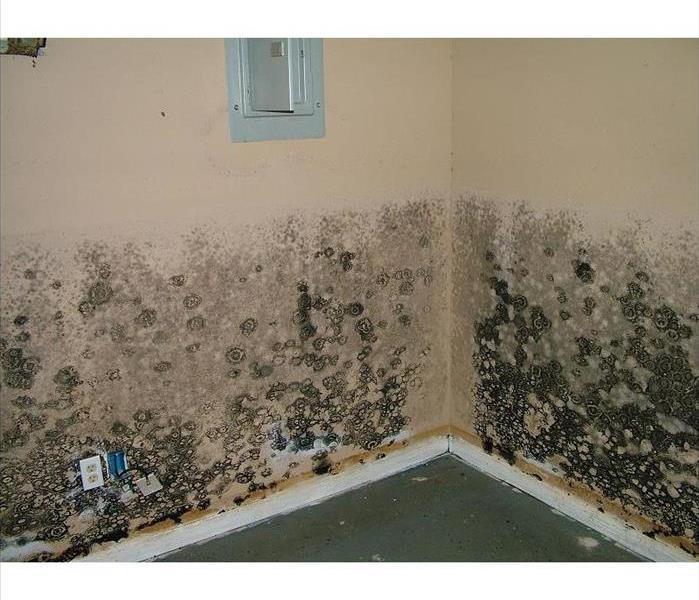Different Types of Mold
9/12/2017 (Permalink)
From the Ordinary
Fungi and mold naturally occur in our environment. In fact, over 100,000 kinds of fungi have been identified. Fungi produce some very useful results. Yeast is a type of fungi used in preparing breads, baked goods, and other food products, including some alcoholic beverages. The unique flavor of blue cheese is a result of mold. An edible mushroom is simply a type of fungi, and lifesaving penicillin is a product of mold (Penicillin chrysogenum). Even though some forms of mold can pass value to our lives, other forms of mold can be harmful. Excessive amounts of mold, different types of mold, and/or exposure to molds may present health concerns for some people.
To the Unhealthy
Intrusion of water into your home or place of business can result in mold growth. Water intrusion can result from storm damage, plumbing or equipment failures, long-standing leaks and poor humidity control. When water intrusions are not addressed right away, the resulting damage can present increased risk of harmful mold growth. Some amount of mold spores are normally present in most environments. If the humidity and moisture levels in a water-damaged environment are not promptly returned to normal, mold spores may grow and multiply. Organic materials found inside a building, such as wood, paper, drywall, and insulation, provide a food source for mold to flourish. Excessive mold growth can lead to indoor environmental conditions that pose a health hazard.






 24/7 Emergency Service
24/7 Emergency Service
